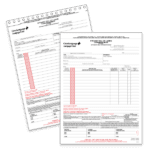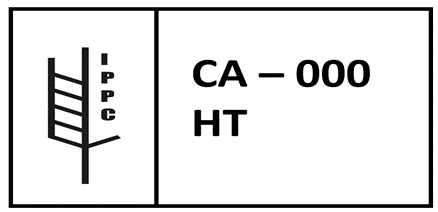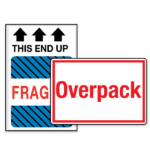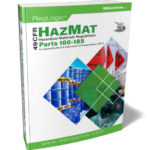New Canadian Entry Requirements for Wood Packaging Materials
This past January, the Canadian food inspection agency revised the entry requirements for all packaging materials containing wood products. These updates were deemed necessary to align us with international standards and will take effect on July 6, 2023.
If you import / export wood products such as pallets, crates, or dunnage (e.g., to secure products in a sea container) internationally, it is important that you advise your organization and / or your overseas suppliers of these requirements. This will prevent any delays or quarantine of your product at the port of entry.
The updates include import requirements for dunnage entering Canada mainly by sea transportation. A shipborne dunnage management program has also been set up to help address the possibility of pests contained in the wood products. The Japanese beetle is an example of a pest that has entered North America that has caused serious damage to the forests in British Columbia, Canada. Another pest, the Pine Wood Nematode, has entered Asia, Spain, and Portugal, possibly through wood packaging.
The Canadian food inspection agency added new approved wood treatment packaging material as well as the marking requirements that wood products should have (see Appendix 1 of Entry Requirements for Wood Packaging Material into Canada).
When selecting/procuring wood products to be used as dunnage or packaging for international travels, ensure it is duly marked as follows:
- First, must have the International Plant Protection Convention (IPPC).
- Second, the two-letter country code. For this example, I used CA for Canada
Note: the country code must be the International Organization for Standardization (ISO). - Third, the 000 would be where the producer / treatment provider code would be. It is a unique code assigned by the National Plant Protection Organizations (NPPO).
- Then finally, HT is the treatment code. It is an IPPC abbreviation for the approved measure used.
-
- HT = heat treatment
- DH = dielectric heating
- MB = methyl bromide fumigation
- SF = sulphuryl fluoride fumigation
Now, there are exemptions from the regulations, and they can be found under 4.2.1 listed in the link below.
Here are some examples,
- wood packaging material made entirely from thin wood of 6 mm or less in thickness;
- wood packaging material made entirely from processed wood such as plywood, particle board, oriented strand board, or veneer that has been created using glue, heat, pressure, or any combination thereof;
- wood shavings, sawdust, and wood wool used to stabilize a commodity;
- gift boxes for wine, cigars and other commodities made from wood that has been processed and / or manufactured in a way that renders it free of pests.
An important role in ensuring safe and successful international transportation of goods can come from wood packaging products such as dunnage. Not only does it provide extra protection against potential damage during transit, but proper certified wood packaging will help ensure compliance with applicable export regulations regarding pest management. When shipping goods internationally make sure you use certified heat-treated wood packaging free from pests to give your shipment the best chance at arriving safely at its destination on time.
Link to regulation: D- 98-08: Entry Requirements for Wood Packaging Material into Canada – Canadian Food Inspection Agency
Do you have questions about shipping dangerous goods? Our team of experts is just a call away for our customers at 855.734.5469 or send us an email, we’re happy to help.
Stay up to date and sign up for our newsletter!
We have all the products, services and training you need to ensure your staff is properly trained and informed.
 Bill of Lading Forms Bill of Lading Forms |
|










 ICC USA
ICC USA ICC Canada
ICC Canada